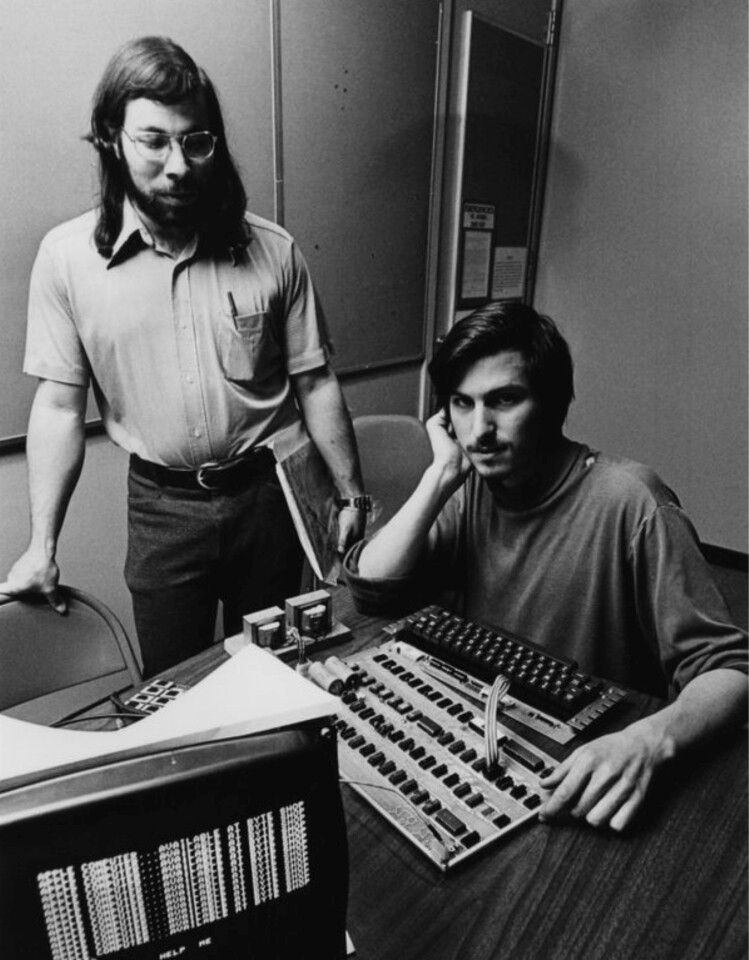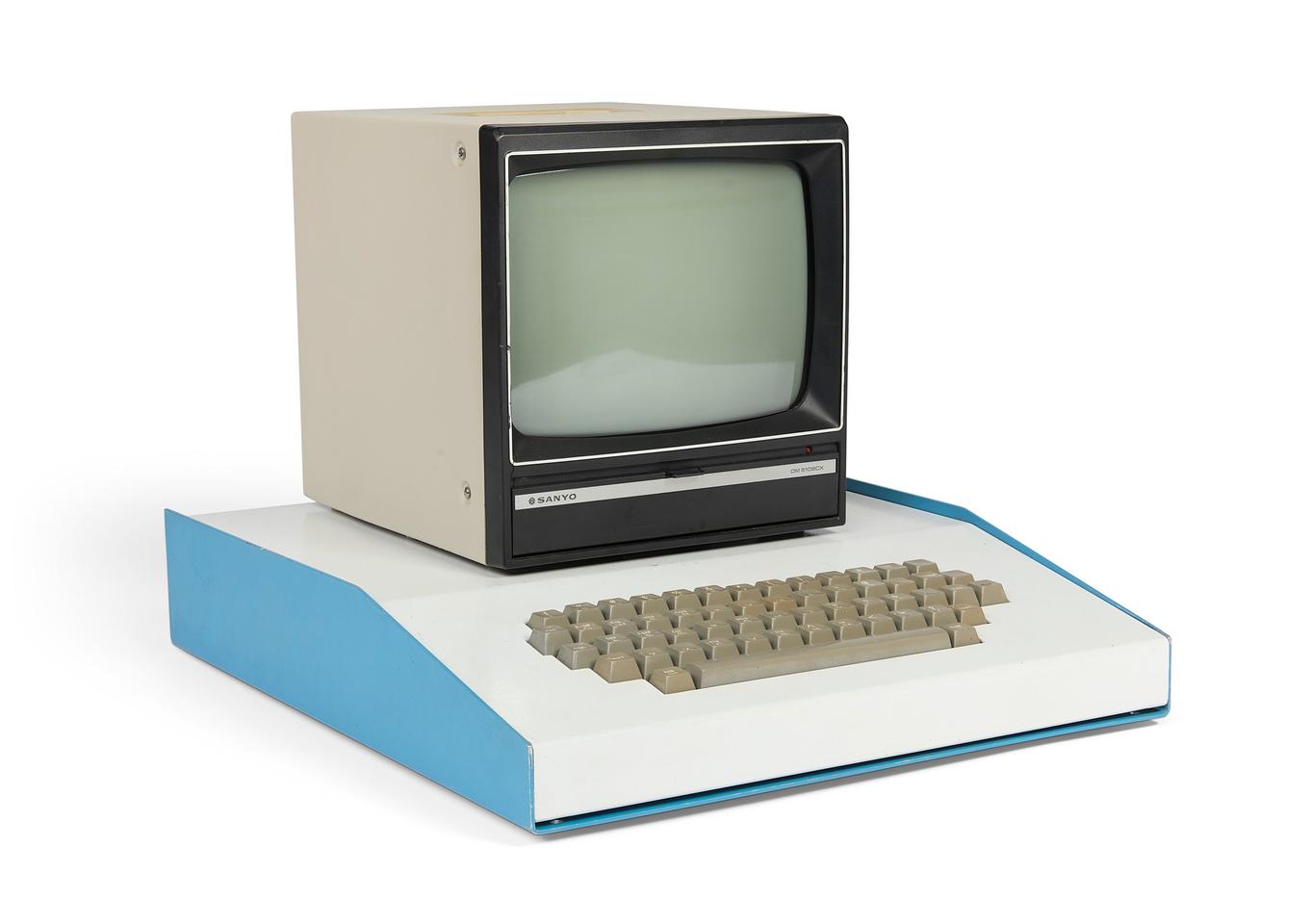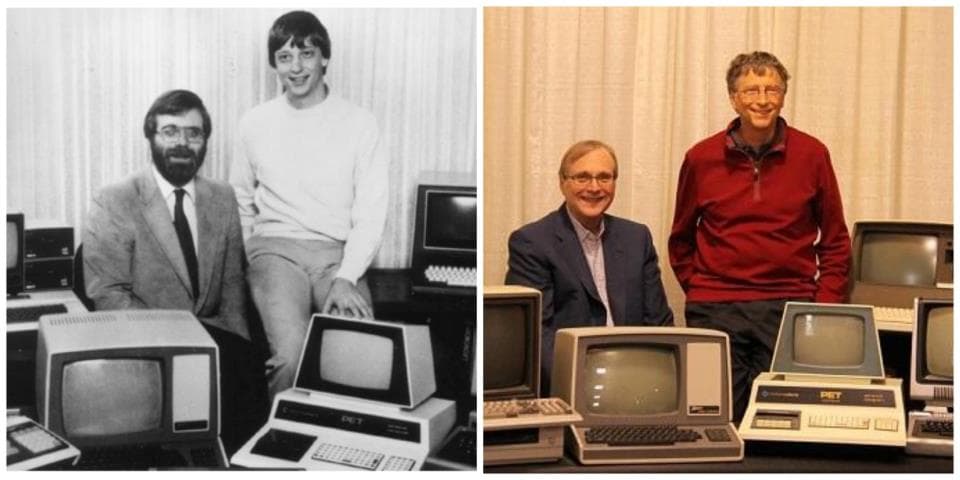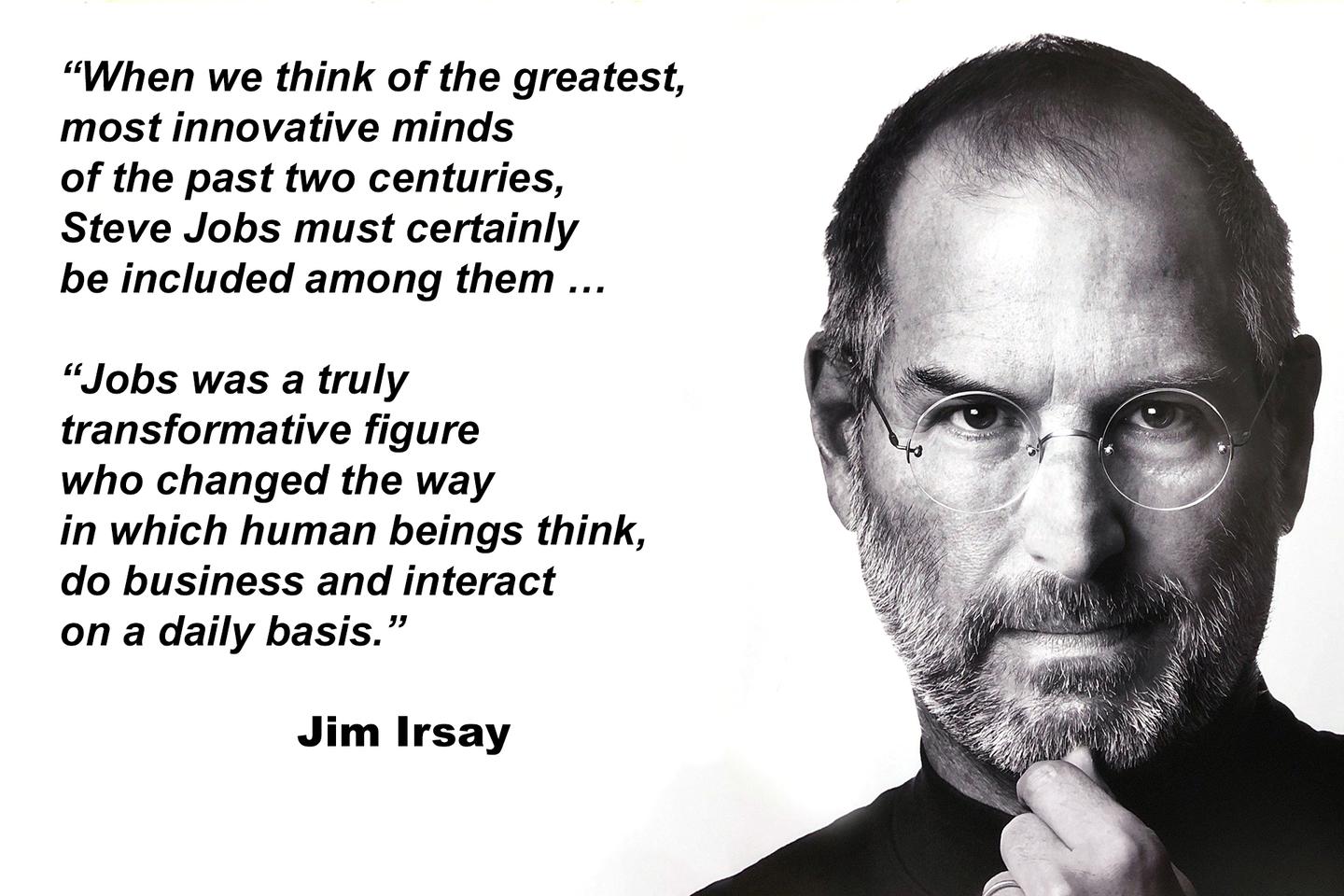Imagine a ‘perfect storm’ on the auction block, where historical importance, rarity, massive demand, the provenance of several of history’s most important people and fortuitous timing all coincide to multiply the sale price to unprecedented levels.
The Apple-1 computer that once graced the desk of one Steve Jobs can be reasonably expected to be that perfect storm when it sells at Christie’s New York on 12 September 2024 – due to three main factors.
The Steve Jobs factor
If you spend any time around startup founders, entrepreneurs and innovation fiends, you’ll know Jobs is held in almost mythical regard. He was a visionary leader, a prescient product developer with a relentless focus on intuitive simplicity, and arguably one of mankind’s most transformative technology thinkers. The iPhone alone – the world’s first multi-touch smartphone, complete with an app store ecosystem – was a legendary achievement that absolutely changed the world.
Steve Jobs’ vision turned devices into experiences, and computers into desirable luxury lifestyle items, and it set Apple on course to become the world’s most valuable company. It holds that title today, some 13 years after Jobs’ death, despite the company having seemingly shifted from a state of constant revolution to measured evolution in his absence.
He’s absolutely one of the most compelling figures of our time – thick chapters in history books will carry his story forward for future generations. So when a personal item ‘blessed’ by his touch goes to auction, people take notice. There are enough data points to suggest his auction ‘multiplication factor’ has now surpassed Marilyn Monroe, Michael Jackson, Elvis Presley, John Lennon and Steve McQueen – and is approaching that of Albert Einstein.
To give a few examples, an unsigned copy of his High School Yearbook sold a few years ago for US$12,000, and a handwritten memo from when he worked at Atari sold for $27,000. A Jobs-signed 1976 Apple Computer check went for $177,000, a signed business card sold for $180,000, a Jobs-signed Apple II manual fetched $787,000, the original Apple partnership contract (with Wozniak) fetched $1.6 million, and even a rudimentary phone freaking device Wozniak and Jobs built and sold (the pair had a brief and highly illegal business manufacturing and selling phone phreaking gear prior to founding Apple) fetched $31,000 thanks to its provenance.
So element 1 in the ‘perfect storm’ – Steve Jobs – is about as powerful a price driver as they come.

Photo Courtesy of Joe Melena, Copyright Apple Computer
The ‘legendary item’ factor
The Apple Computer 1 was the first computer produced by Apple in 1976. Indeed, Steve Jobs and co-Founder Steve Wozniak originally formed the company in order to sell this machine. To raise money for the prototype, Jobs famously sold his Volkswagen Kombi and Wozniak hocked his HP calculator.
This is the design that Wozniak wanted to give away as free schematics for enthusiasts, until Jobs convinced him to go into business. It’s the computer that launched a thousand conspiracy theories by debuting at a price of US$666.66. It was famously hand-built in a garage, in small numbers – only 200 were made, of which only 70 original motherboards can now be accounted for, before it was quickly superseded by the Apple II, which went absolutely banzai and launched the company on its path to massive global success.
This computer is the reason the Apple company exists at all – and if this was the only factor in play, the Apple 1 going to auction would already be a legendary item with a guaranteed place in history.
No doubt there were many people who were motivated to excavate their storerooms, attics and basements when Christie’s sold an Apple-1 for $190,867 (GBP133,250) in 2010. That was a quantum leap from the best previous price we can validate, a $50,000 sale on eBay in 2009. Prior to Y2K, you could pick one up for under $10,000.

The price record rose to $374,500 in June 2012, $627,000 in November 2012, $671,400 in May 2013, and the current record was set in October 2014 when Bonhams sold an Apple-1 for $905,000.
Apple-1s in different states of presentation and wholeness still regularly reach auction, with notable sales of $815,000 in 2016, $736,863 in 2020 and $677,196 in 2021, but the median price is now below $500,000 for the 50-plus auction sales that have occurred since the record was set a decade ago – for some unfathomable reason, the market for the Apple-1 has cooled.
Perhaps the good ones have been recognized as national-treasures-in-waiting and have been locked away in science museums? No! When a near perfect specimen sold in 2021, we were compelled to write an article explaining why the $500,000 price represented a bargain.
This one will certainly not be let go for so little.
The Paul G. Allen Factor

Microsoft
If it wasn’t enough that this legendary item once launched a world-dominating company, and was the personal machine of one of the greatest business and technology figures of our age, there’s another huge factor in play here.
The sale of the Paul G. Allen Collection will go down in history as one of the most important treasure troves ever assembled … and sold.
Allen had the ‘bower bird gene’ and as co-founder of Microsoft, he created one of history’s largest self-made fortunes, despite a life characterized by philanthropy in myriad forms, giving it back to society. All the proceeds of this auction will go to philanthropic causes. Both Allen and co-founder Bill Gates have given more personal wealth to the greater good than any other individuals in history (that word keeps coming up) and Gates is still actively evangelizing the concept of ‘giving back’ to the world’s richest people.
During his fascinating lifetime, Allen also assembled two of history’s finest and most valuable collections surrounding his greatest passions – one of art, the other of technology history. Here’s a small sample of the art:
Visionary: The Collection of Paul G. Allen Collection | Christie’s Inc
Most of the art collection was sold in November 2022, fetching $1,622,249,500 to become the largest single-owner sale in auction history, streaking past the previous world record half way through the first evening of the sale. The previous record was held by the Macklowe Collection and our write up of that sale might help to frame the magnitude of the relevant factors coming to bear upon this auction, and this item in particular.
Five paintings that night sold for more than $100 million apiece – the paddle holders in the audience represented a who’s who of the art world – normally such people would attend remotely, but they all turned up to experience what they knew was coming: Les Poseuses, Ensemble (Petite version) by Georges Seurat sold for $149.24 million, Paul Cézanne’s La Montagne Sainte-Victoire realized $137.8 million, Verger avec cyprès by Vincent Van Gogh fetched $117.2 million, Maternité II by Paul Gauguin sold at $105.7 million and Birch Forest by Gustav Klimt reached $104.6 million.
The world will be watching
Allen’s equally spectacular collection of technological firsts is now going to auction, and every item in this virtual museum auction has been enhanced by Allen’s presence, having earned the honor of being chosen for a collection of the finest available examples of a technological first. No expense was spared in assembling this collection – Allen’s funds were virtually unlimited – so it’s absolutely the best of the best.
The jewel of the collection is Albert Einstein’s famous letter to FDR that catalyzed the atomic age, but there’s a storied, pristine specimen of all the recognizable landmark technological firsts – a 4-rotor German Enigma encryption machine, an Engelbert Computer mouse, a Computer Space Arcade Console, a Malling-Hansen Writing Ball, a Cray Supercomputer … and Steve Jobs’ Apple-1.
Historic computer collection of Microsoft co-founder Paul G. Allen | Christie’s
The prices of these objects are insignificant compared to the prices fetched by Allen’s art collection, yet they all represent the finest examples of world technological firsts – products that changed everything thereafter.
The massive societal advances enabled by these inventions happened so recently that their true worth to society has not yet been fully appreciated … and in 100 years time, perhaps the artifacts in this auction might be worth more than the paintings that fetched $1.6 billion.
A perfect storm
Suffice to say, these three powerful factors combine to make Steve Jobs’ personal Apple 1, from the Paul G. Allen collection, about as desirable an auction catch as any piece of technology that’s ever gone under the hammer. If a Steve Jobs business card is worth $180,000… what is the gunman’s gun worth?

Apple / NewAtlas.com
Timing is everything
We’ve been preaching for several decades that we believe the market for important technological memorabilia is grossly undervalued because the market has not yet fully framed the tremendous consequence of recent technological breakthroughs in historical perspective.
Some of these significant historical artifacts have sold for peanuts, yet 50, 100 or 1,000 years from now, they will be of immense significance to human history as their role in the digital renaissance will have been recognized for their impact on society. Right now, the digital age is still dawning, and we’re in the middle of a massive societal transformation as the internet and myriad other technological advances revolutionize almost everything we do.
This computer sat on Jobs’ desk in 1976, the year Apple kicked away. It played a pivotal role in Jobs “changing the world” In 2026, two years from now, Apple’s 50th anniversary will be celebrated. Apple has around $165 billion in cash right now, so if it decides it wants to buy back part of its history for the occasion, it will simply do so.
If Apple decides to pass on the opportunity to buy back Steve’s Apple-1, there will be plenty of interest.
If this computer were to go to auction during a period when the historical significance of Apple was being publicly eulogized … in 2026 … it would logically fetch more than than it does on September 12. Hence speculators might expect a handy 24-month return on their investment.
In a just world, this would be a national treasure and on display in a museum, and the official estimate suggests it is within the reach of most such public institutions, though it will almost certainly go much higher and if it doesn’t, then someone (hopefully a museum) will have landed a bargain.
Finally, for those of us without enough capital to play the heavyweight memorabilia game, watching landmark auctions seems to be quickly evolving into a compelling spectator sport. They’re all streamed live, they’re entertaining and informative… and they’re free.
We can’t wait to watch this one.
Source: Christie’s
Source of Article